What Kind of Foam Does a Spray Foam Contractor in Salisbury, MD Recommend?
Choosing the right type of foam insulation isn’t just a product decision—it’s about finding the right fit for your home or building based on how it’s built, how it’s used, and what kind of protection it needs. In Salisbury, where the weather swings between hot, humid summers and chilly winters, insulation isn’t something to guess on.
If you’ve been searching for guidance on what foam works best for your specific structure, this article breaks it down. You’ll learn what a professional spray foam contractor in Salisbury, MD, and why those recommendations matter when it comes to comfort, air quality, and energy savings.
What a Spray Foam Contractor in Salisbury, MD Recommends—and Why It Matters
Not all foam is created equal, and not every structure needs the same approach. A trained spray foam contractor will evaluate your property to determine whether open-cell or closed-cell foam—or a mix of both—makes the most sense.
Peninsula Insulation, LLC is one of the trusted insulation providers serving the Salisbury area. Their experienced foam professionals work across residential, commercial, and agricultural settings, tailoring each project based on building age, exposure, moisture risk, and performance goals. The goal is to make each building more efficient and more resilient—whether it’s an attic retrofit or a full crawlspace encapsulation.
Here’s how they decide what to use:
- Open cell foam is great for interior sound control and filling complex wall cavities.
- Closed cell foam is better for moisture protection, strength, and outdoor-facing areas.
- A combination of methods often delivers the most complete performance, especially for larger or more complex structures.
Every property in Salisbury faces different challenges—coastal moisture, older construction, seasonal heating and cooling demands. That’s why a project-based insulation team looks at the building from all sides before choosing materials.
Matching Foam Types to Building Conditions
Insulation works best when it’s matched to the needs of the space. The type of foam used can change based on moisture exposure, ventilation requirements, framing materials, and energy performance goals.
Understanding Open Cell Foam
This foam expands rapidly and fills irregular cavities. It’s more flexible and allows moisture vapor to pass through in a controlled way.
- Best for interior walls and ceilings
- Reduces airborne noise between rooms
- Helps manage internal airflow
- Not ideal for exposed outdoor use
Understanding Closed Cell Foam
With its dense structure, closed cell foam resists water and adds structural strength to the surface it’s applied to.
- Works well in basements, crawlspaces, and exterior walls
- Creates a vapor barrier
- Excellent in flood-prone or humid areas like Salisbury
- More rigid and durable than open cell
Where Spray Foam Makes the Biggest Difference
- Crawlspaces: Closed cell foam stops moisture and improves indoor air
- Attics: Open cell foam insulates and seals while reducing noise
- Basements: Closed cell creates a strong barrier against dampness
- Garages or Sheds: Either foam type depending on usage and exposure
- New builds: Blending both types during early construction offers best-in-class efficiency
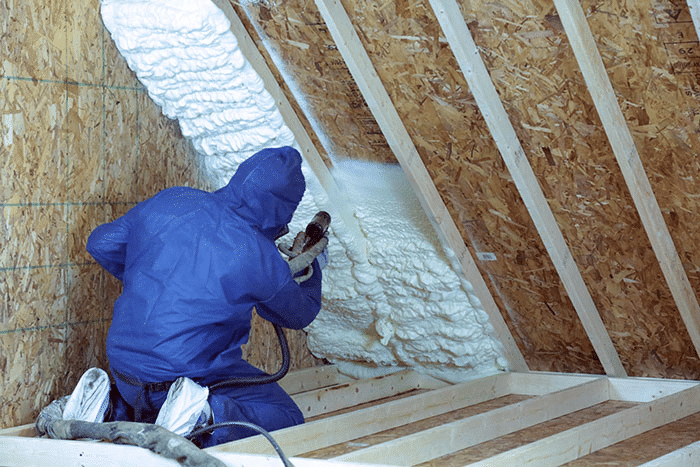
What Services Are Recommended for Salisbury Buildings?
Choosing the right insulation service isn’t just about the material—it’s about where and how it’s applied. Below is a breakdown of the most commonly recommended services from Peninsula Insulation.
Open Cell Spray Foam
Ideal for filling deep cavities and soundproofing. It expands to seal air gaps and is often used in interior walls and ceilings.
Closed Cell Spray Foam
Best for crawlspaces, basements, and any area with moisture concerns. Adds durability, air sealing, and long-term protection.
Agricultural Insulation
Custom insulation for barns, outbuildings, and agricultural facilities. Helps protect equipment, animals, and crops from temperature swings and airborne dust.
Residential Insulation
Tailored to individual homes, from attic upgrades to full building retrofits. Focuses on reducing utility bills and sealing drafts.
Commercial Insulation
Used in retail buildings, offices, warehouses, and other workspaces. Improves air handling, thermal performance, and comfort across zones.
Blown-In Insulation
Used in attics or finished wall cavities. Fills tight spaces and boosts R-values, often combined with air sealing.
Fiberglass Insulation
Traditional batt insulation. Cost-effective when installed alongside modern air sealing methods.
Mineral Wool Insulation
Fire-resistant and excellent for sound dampening. Often used in mixed-use or commercial settings where code requirements are strict.
Air Sealing
Closes small gaps around pipes, wires, doors, and windows. A key step in any spray foam project to make the insulation system work effectively.
Foundation Insulation
Prevents cold transfer and moisture seepage from the ground up. Vital for basement-level comfort and air quality.
New Construction Insulation
For homes or buildings in early stages. Offers the highest long-term return by setting up a sealed and efficient envelope from the start.
Thermal Barrier System
Adds a protective layer over foam in spaces that require it. Used to meet fire code standards.
Crawlspace Encapsulation
Fully seals off crawlspaces using foam, vapor barriers, and drainage methods. Essential for reducing mold, air pollutants, and humidity from the ground level.
Which Foam Fits Best? Comparison Chart
| Foam Type | Best Use Case | Moisture Resistance | Vapor Barrier | Sound Control | Cost Effectiveness |
|---|---|---|---|---|---|
| Open Cell Foam | Interior walls & attics | Moderate | No | High | High (per volume) |
| Closed Cell Foam | Crawlspaces, foundations, exteriors | Excellent | Yes | Moderate | Higher upfront |
| Fiberglass | Budget residential spaces | Low | No | Low | Low |
| Mineral Wool | Fire-resistant or sound-priority zones | Moderate | Some | High | Mid-range |
| Blown-In Insulation | Attic floors, retrofit walls | Low | No | Moderate | Cost-effective |
Questions People Ask About Foam Recommendations
What’s better for attics—open or closed cell foam? Open cell foam is usually better for attic spaces because it expands more and provides better sound control. Closed cell may be used when moisture is a concern.
Can you mix foam types in one building? Yes. Many insulation teams combine foam types depending on the area. For example, open cell in walls and closed cell in basements.
Will open cell foam hold up in humid summers? It can, but only in the right places. It’s not recommended in basements or crawlspaces, but works well in conditioned interior areas.
Do you always need a vapor barrier with spray foam? Closed cell foam often acts as its own vapor barrier. Open cell does not, so extra layers might be needed in certain installations.
Finding the Right Fit for Salisbury Properties
Every building is different. What works in a downtown office won’t be right for a farm building just a few miles outside Salisbury. That’s why trained foam professionals don’t offer one-size-fits-all advice. They assess the structure, moisture conditions, air handling, and even local code requirements before making a recommendation.
A skilled spray foam installer brings a project-based mindset, not just a product pitch. It’s about finding what protects your investment for the long term.
Ready to Achieve Energy-Efficient Indoor Performance?
A well-insulated building performs better, lasts longer, and feels more comfortable every season. Peninsula Insulation, LLC works with Salisbury property owners to identify the right foam for each structure and install it with precision and care.
To schedule a consultation or get a custom estimate, call (410) 770-2624 or email wil@mdsprayfoam.net today.
FAQs
How do spray foam teams choose between open and closed cell? They evaluate the location, exposure to moisture, and insulation goals. Each foam type has strengths that apply to specific building areas.
Can spray foam improve indoor air quality? Yes. By sealing off outdoor air and moisture, foam insulation reduces dust, mold, and other airborne irritants.
What’s the installation time for spray foam? Most jobs are completed in one to two days depending on size. Larger buildings or complex zones may take longer.
Are foam estimates based on square footage or complexity? Both. Square footage plays a role, but project complexity, access, and prep work also factor into the estimate.
Does the foam insulation need annual maintenance? No. Once installed, spray foam generally lasts for decades with little to no maintenance if properly applied
Author: Wil Perkins is the founder of Peninsula Insulation and a long-time resident of Easton, Maryland. With a hands-on approach and nearly five years in the insulation business, Wil leads a team known for professional service and quality work. He’s committed to providing the best spray foam insulation solutions and lasting results for every project.
Reviewer: Emily Martinez has 12 years of experience in spray foam insulation. She reviewed this article and suggested ways to make the content more useful for contractors looking to grow their customer base.

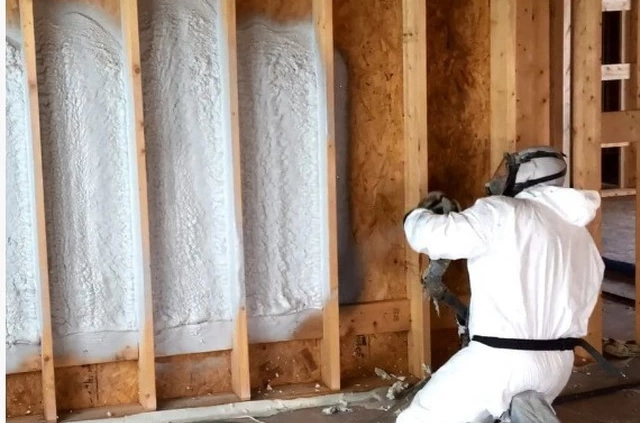
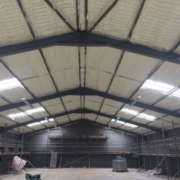




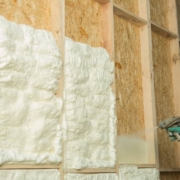

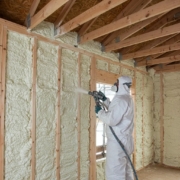

Leave a Reply
Want to join the discussion?Feel free to contribute!